Whats new in peat industry? Baltic Peat Producers Forum 2017
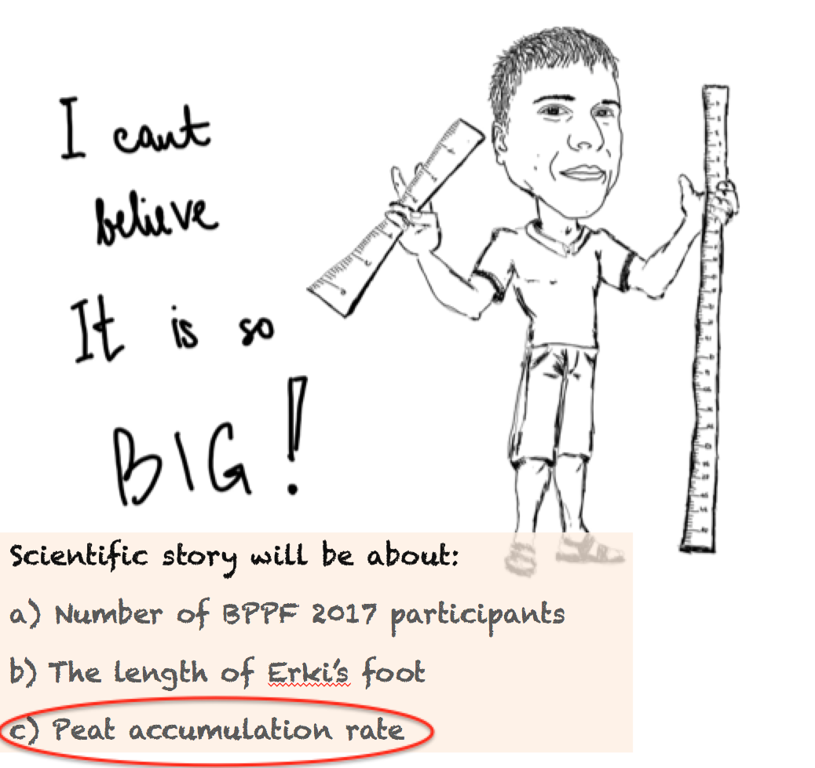
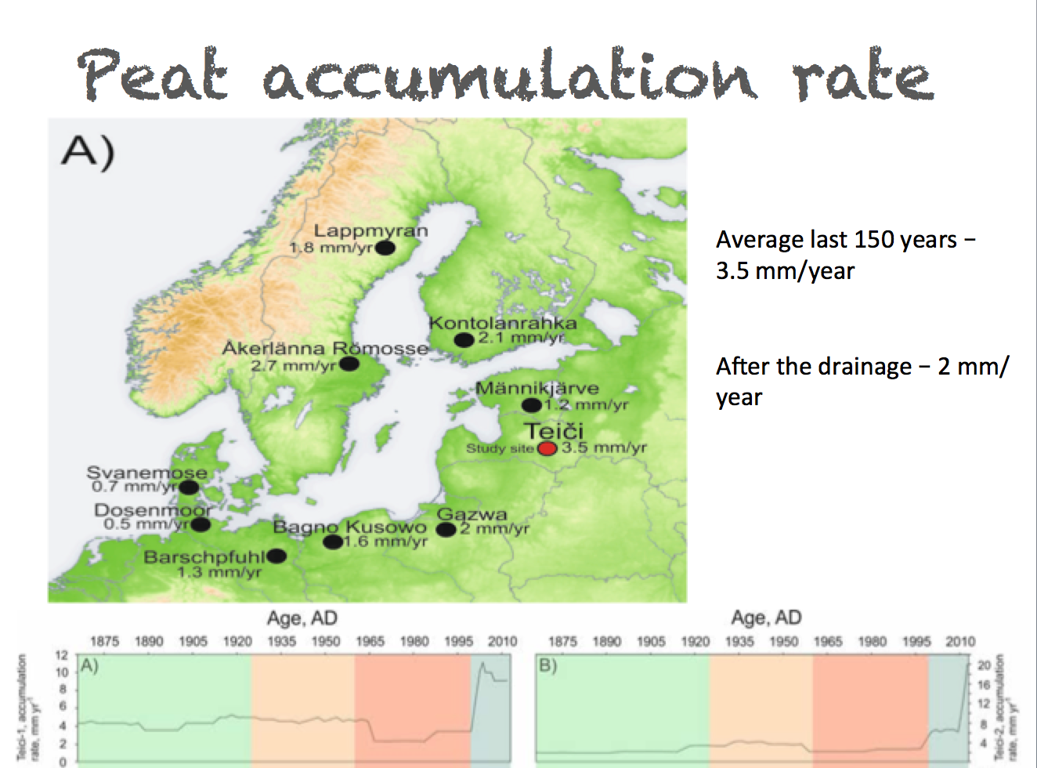
In the next cartoon, I portray myself where I offer science fiction - to build a greenhouse over the bog, "pump out" CO2 and, like gas, accumulate in the sandstones. Below, I explained how much carbon has accumulated over the past 150 years. On average, it is 200 grams of carbon per square meter or 2,2 t per ha per year. If we assume that this is the average deposition rates across all bog, then in this bog (with an area 19,587 ha) accumulate approximately 43 000 tonnes of carbon every year. If we assume that the protected bogs in Latvia have the same carbon accumulation rate, then we can assume that around 280 000 t of carbon is accumulated annually there. Latvia annually reports 11 million tonnes of CO2 equivalent. An important point here is that these are only assumptions. To make more accurate calculations, new studies should be carried out in other bogs. This famous scientific comment!!!
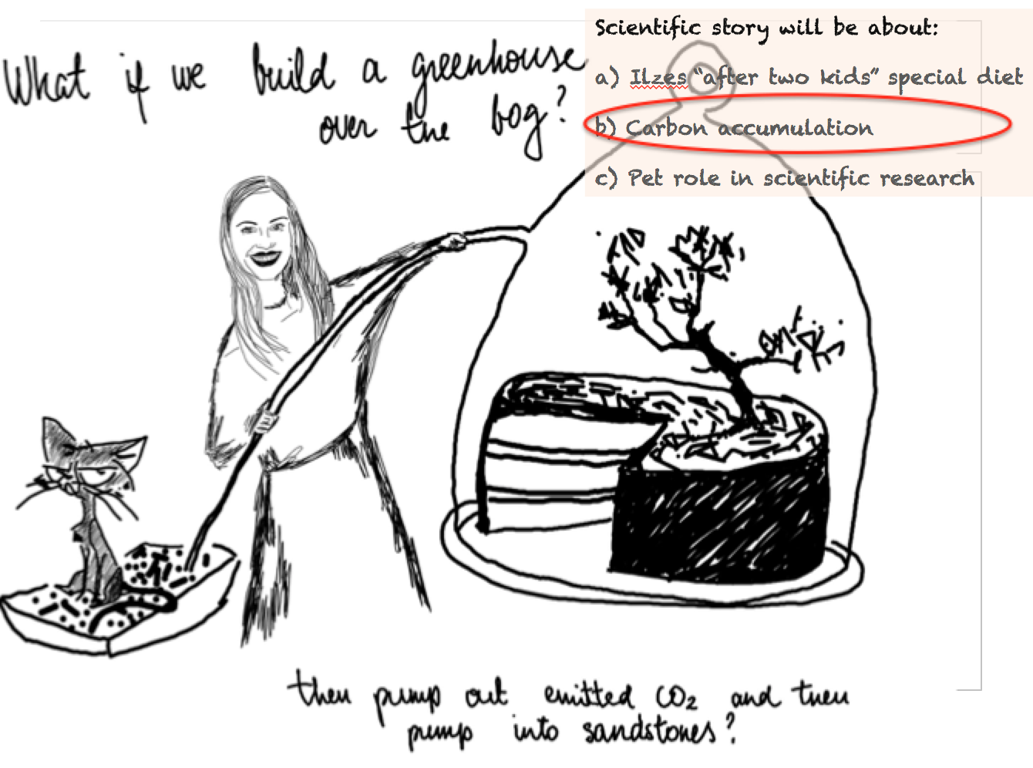
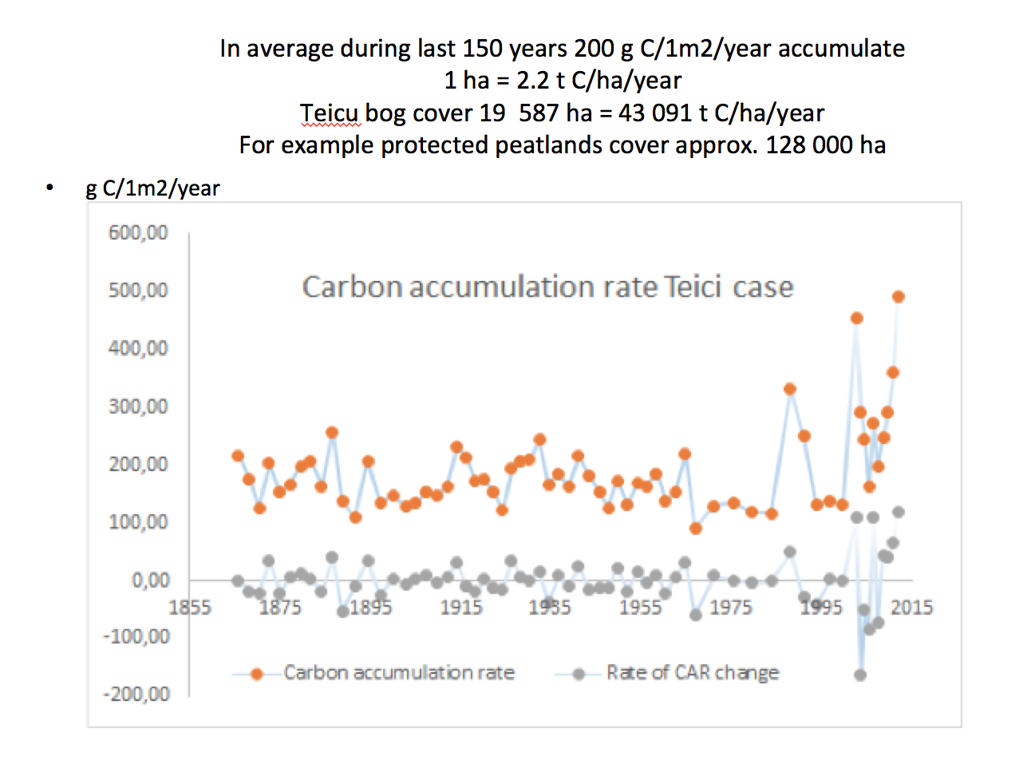
And the final slide of my presentation - in honor of this rainy summer as a consolation for the peat industry.
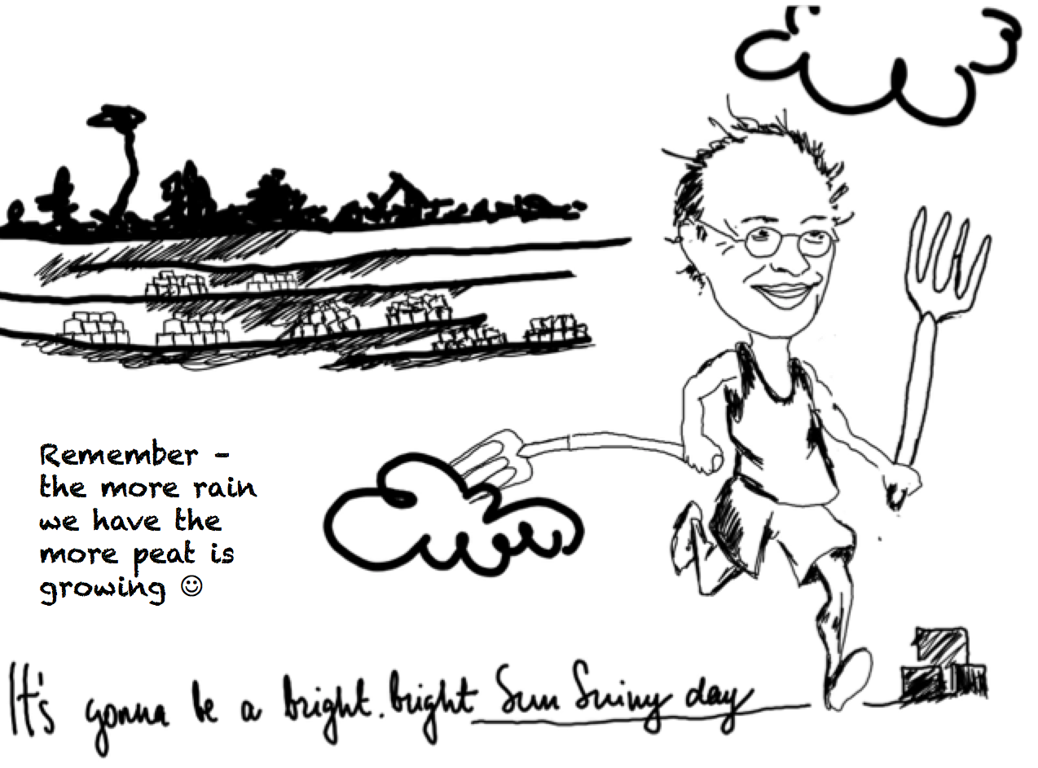
Other presentations can be downloaded at the Latvian Peat Association website here.
The content of the presentations will be interesting also for other people related to peat issues. To encourage you to take a look, I'll mention what I found interesting.
The Peat Strategy is still developed - the working group was set up in 2014, it's been 3 years since there has not been any document to read, discuss, evaluate ... So "fast" things are going through ministries, departments, working groups ...
Biotope Mapping - the first data is expected in 2020. It will be interesting - how much do we really have bogs and fens? The number 10.7% is the coverage of peat deposits. This number is mostly used by the peat industry. Biologists and other nature protectionists use 4.9% derived from the Peat Found, which was created in 1980, the areas with a typical bog or fen vegetation. But more than 35 years have passed - new data is needed!
The territories that we call the cut-over peatlands - those in which the peat extraction ended in the Soviet times and those were peat extraction ended just recently has been counted. These are 37 000 ha counted by Agnese Priede using orthophoto and other data.
Slide from Juris Jātnieks presentation "Nature conservation and the role of cross-sectoral synergies".
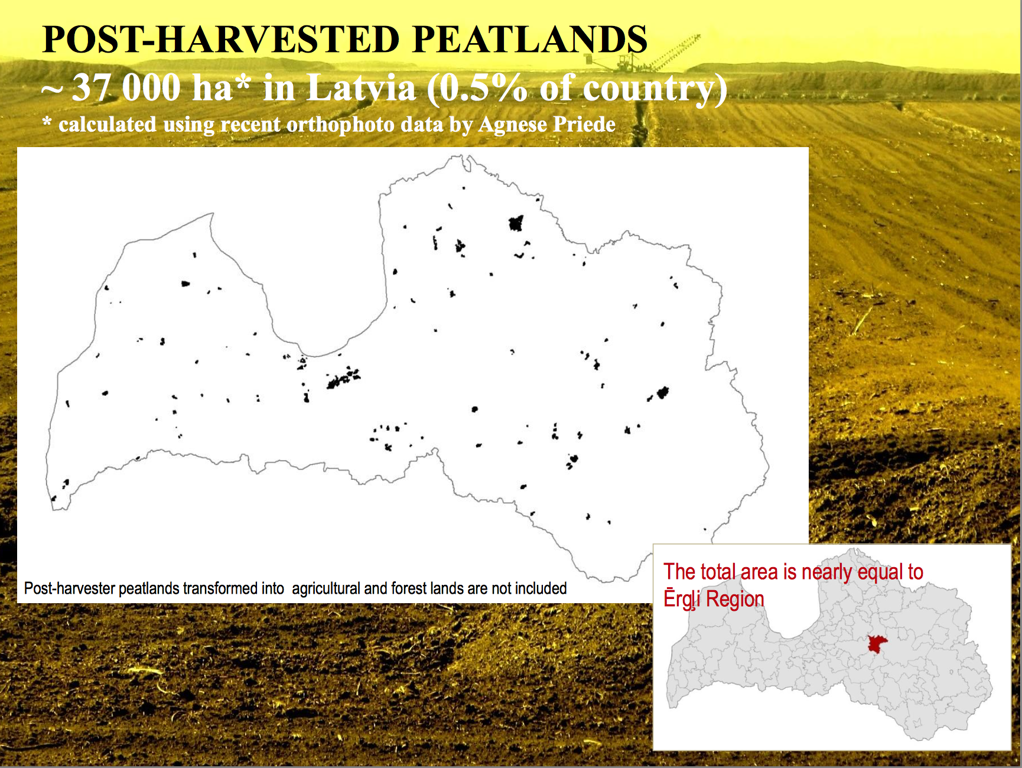
It seemed a bit wrong to show a picture of the so-called "peat deserts" (see picture below) right after this map. To the question of exactly how much peat desserts we have the author of the presentation didn't know the answer (and no one does), but the impression was that all the areas displayed on the map look exactly like this. I have to admit that I have been in many of the developed peat fields and only occasionally I have seen such a view. Most of them are overgrown with birch trees, and in many places, the mire is already formed.
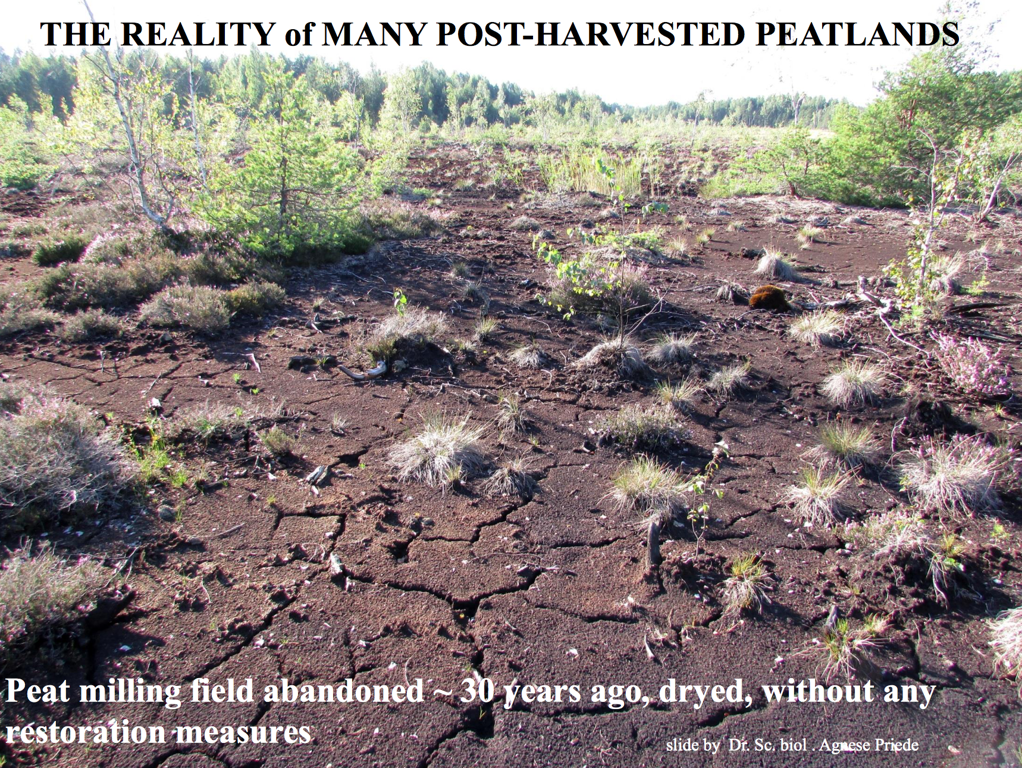
Andis Lazdins presentation also provides data on peat extraction sites that affect greenhouse gas emissions:
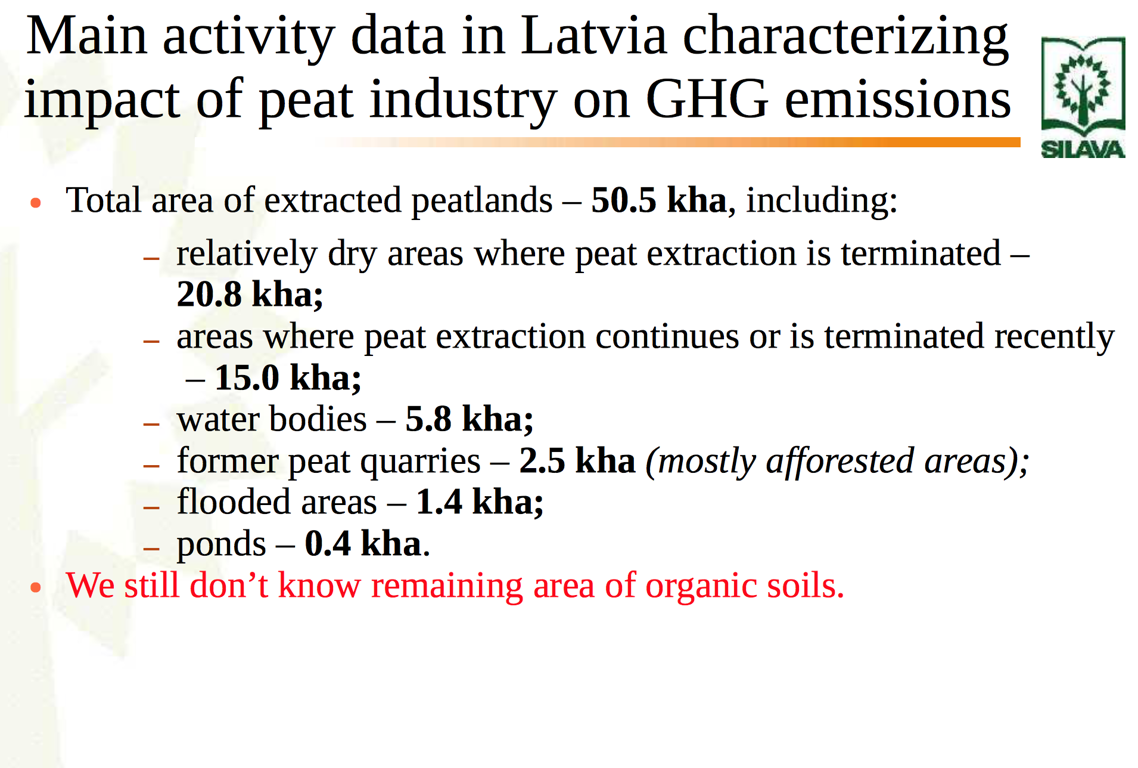
Energy peat - we do not use in Latvia, in Estonia the demand for peat has dropped sharply in recent years, but in Lithuania, it has never been large. Sweden, Finland, Ireland are still combusting peat.
Image from the presentation "Future of Energy Peat in the European Union", Jaakko Silpola - Chairman of the Board of the EPE.
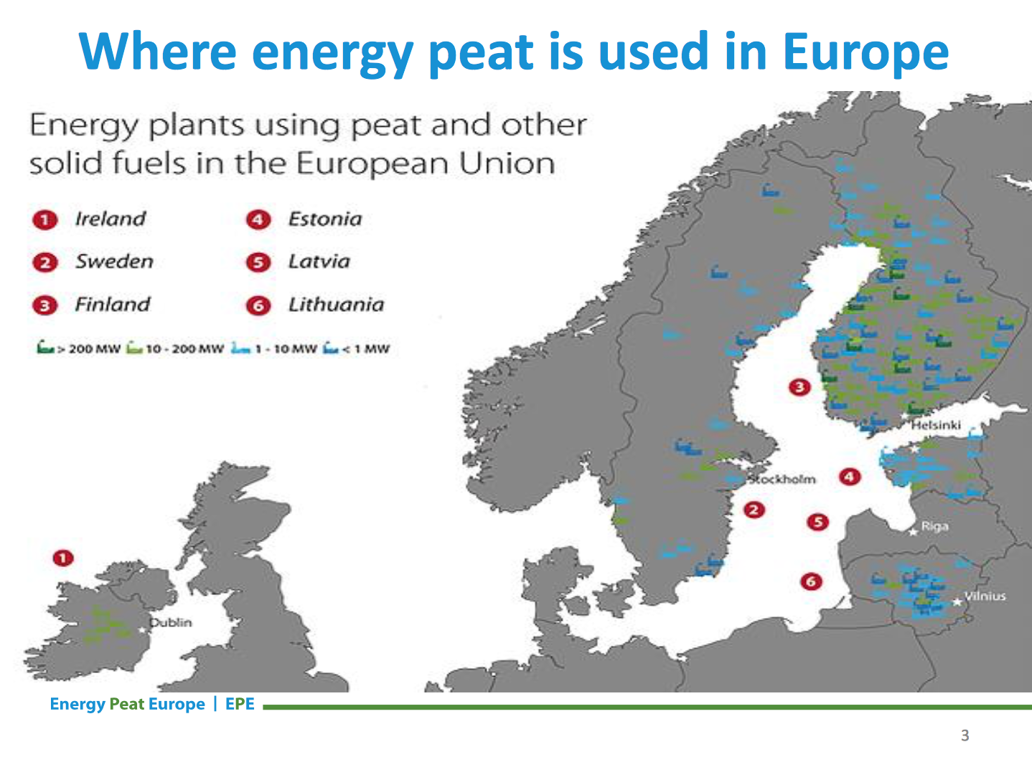
From the point of view of greenhouse gases and climate goals, boosting peat is welcome. However, if we look at the next picture, then it is clear that Latvia is even heavily dependent on imported energy resources and mostly directly from our large and unpredictable neighbor. Leaving a small share of Latvia's energy balance for peat would be even very far-sighted.
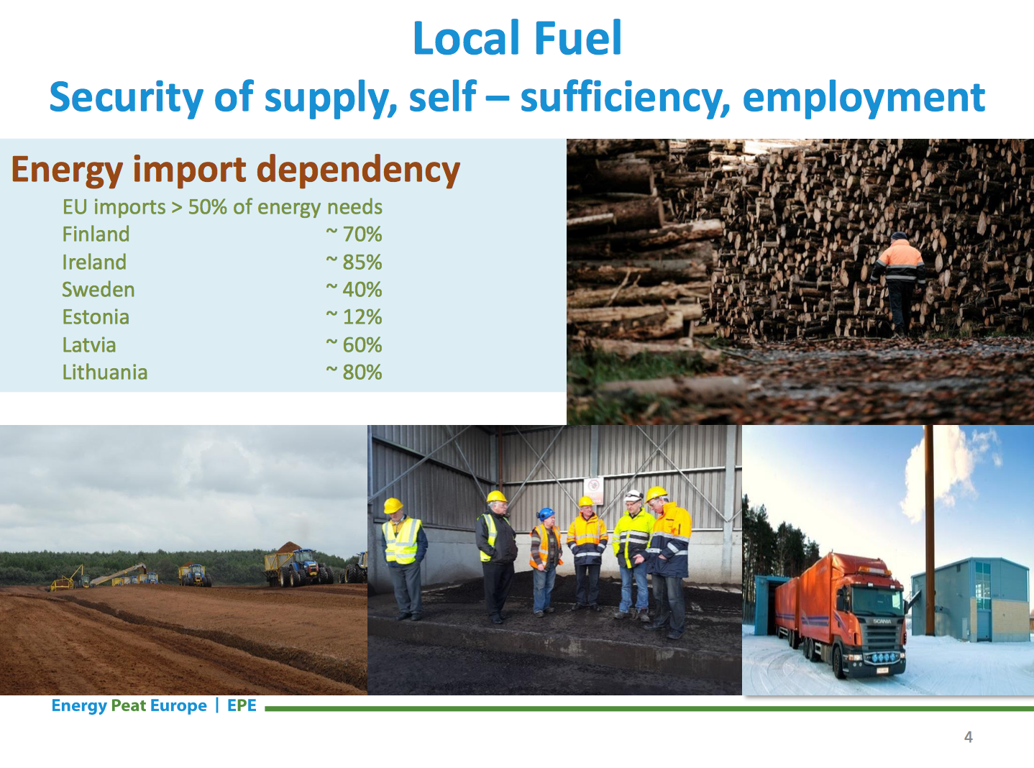
It would seem that in Sweden the green targets are prevailing - 4 cogeneration stations have been abandoned by burning peat, 6 are planning to abandon it by 2030, however, 15 stations continue to heat, and another 2 is planned to be erected to increase the use of peat. In general, the use of peat in energy is increasing.
The main reason why peat is not used is the IPCC (International Panel on Climate Change) definition:
Picture of Claes Rülcker's presentation "Current situation for peat industry in Sweden 2017".
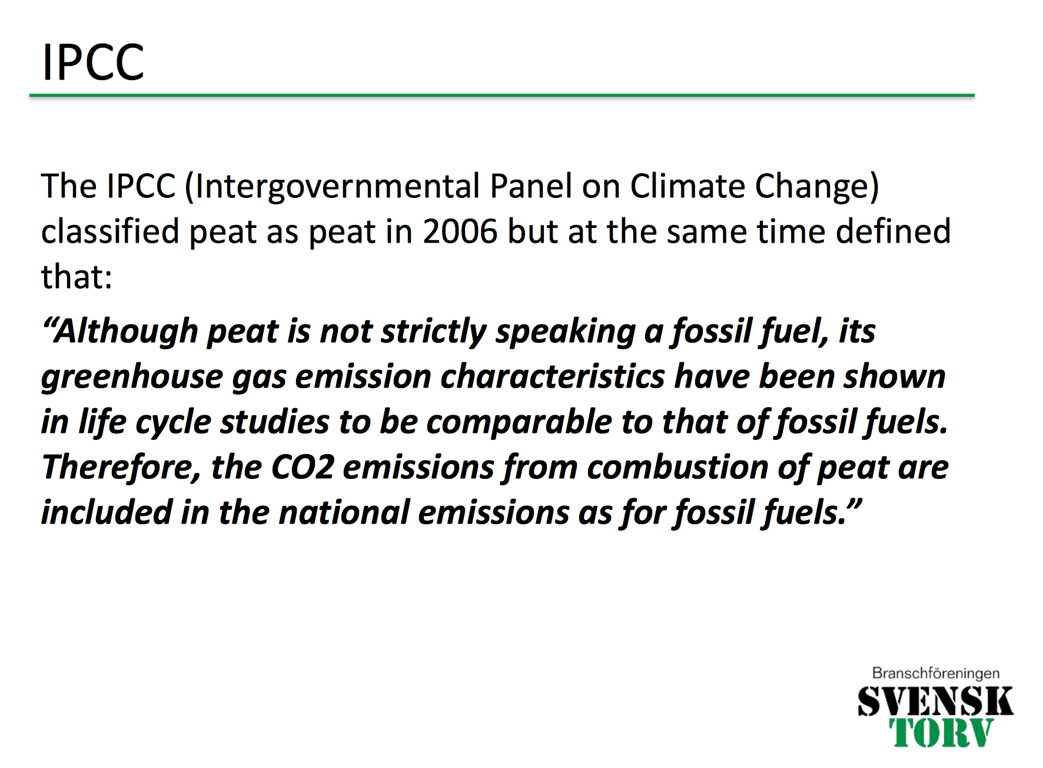
Ash as fertilizer. One of the questions that usually arise when thinking about combusting peat is - where to put ashes? Andis Lazdins, in his presentation "Greenhouse gas (GHG) emissions from peatlands and organic soil-related research in Latvia" told about greenhouse gases and also answered this question - ash should be used as fertilizer, also on cut-over peat fields before planting trees.
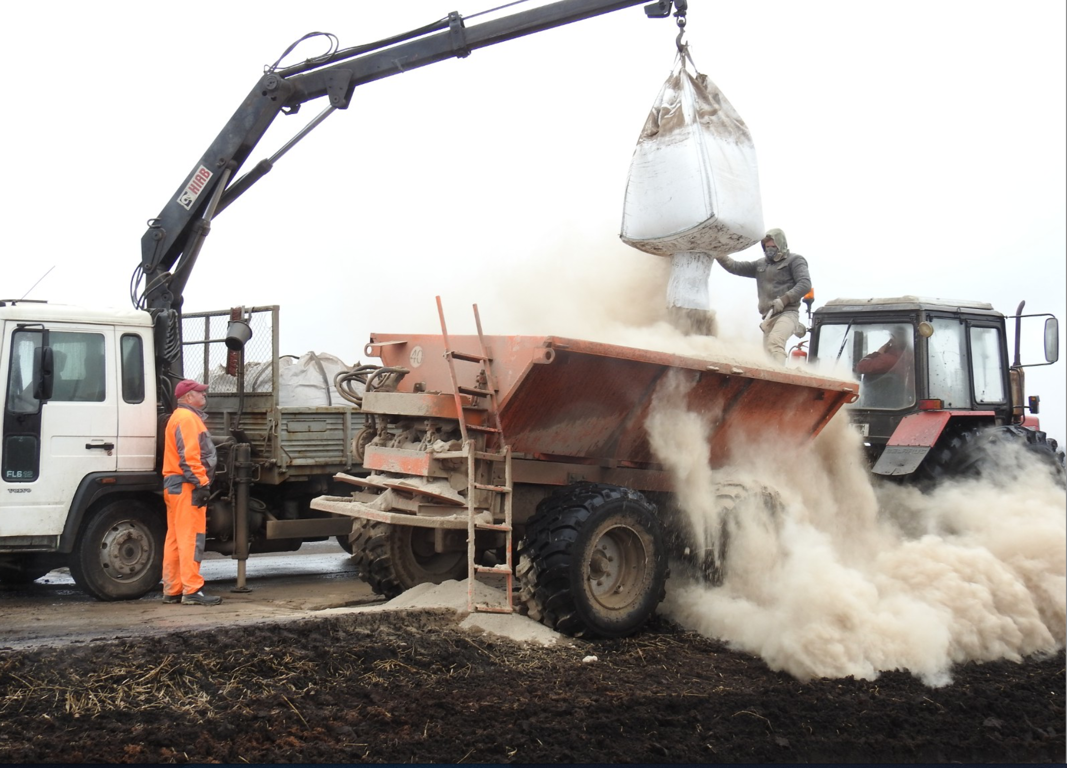
Costs for fertilization with wood ashes is calculated:
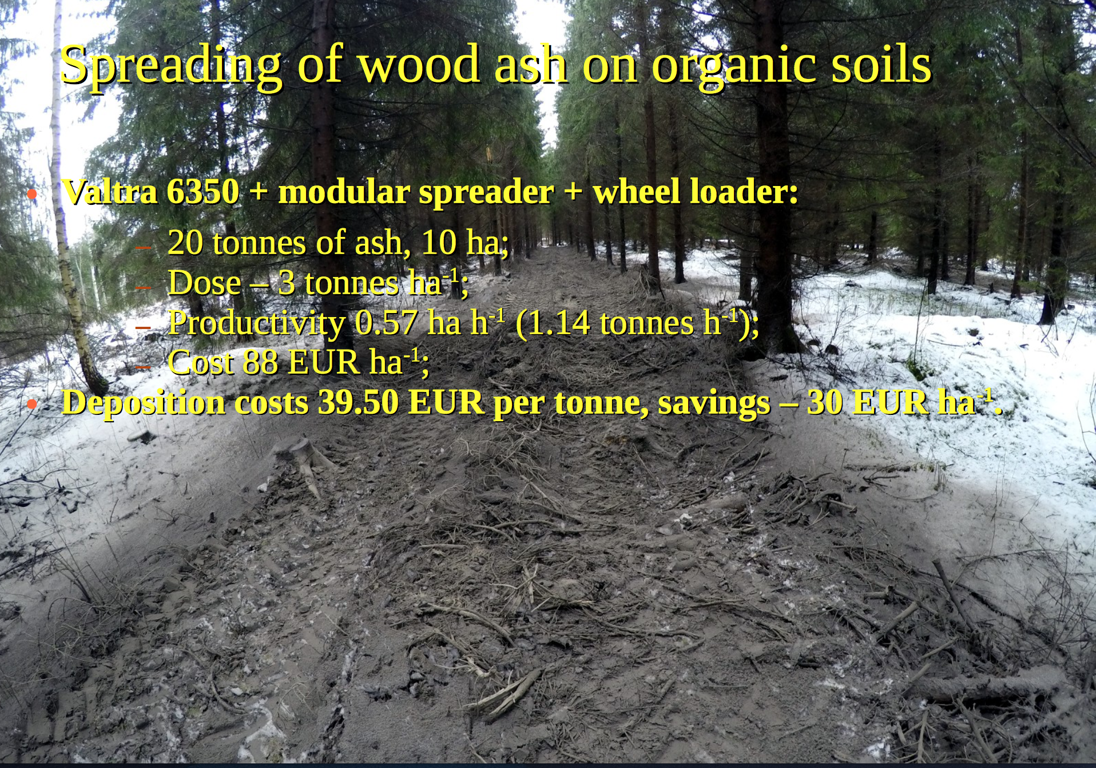
The presentation by Dagnija Lazdina, "Re-cultivation, improvement and reuse of peat mining areas", was very interesting, almost every slide should be put here, as long as I could accurately recall her story. If the presentation by Anda Lazdins I dug up the economic calculation of ash eutrophication, then from this presentation I will put on the natural benefits of fertilizing with ashes.
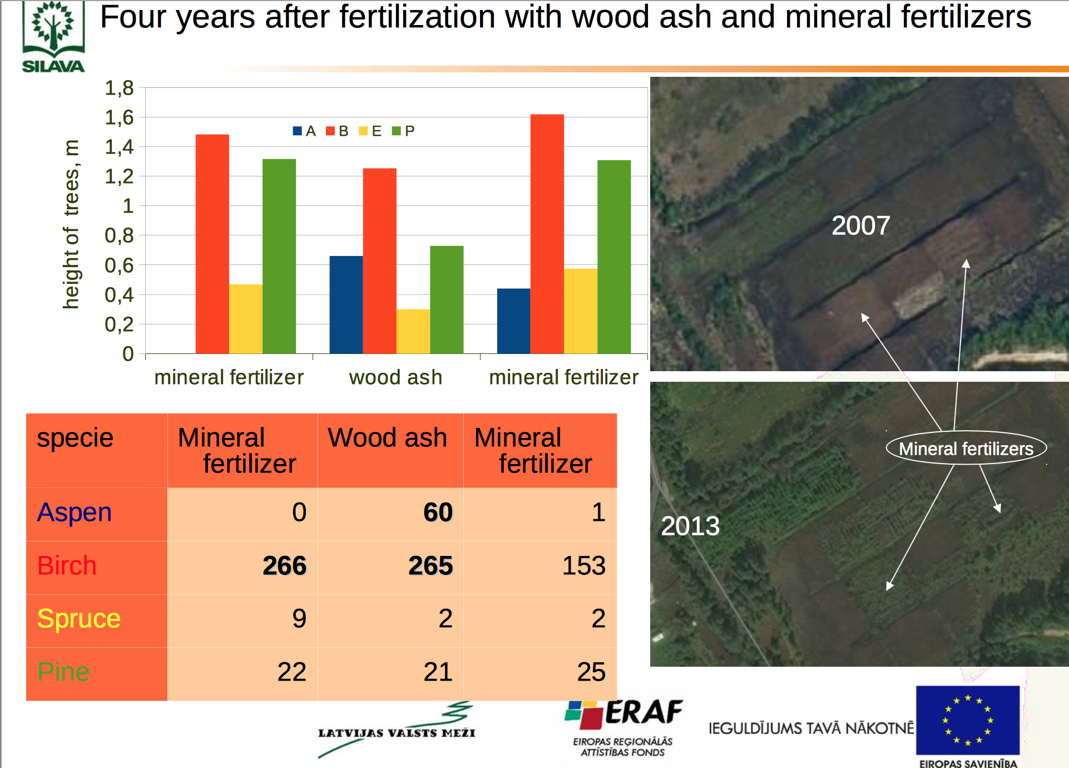
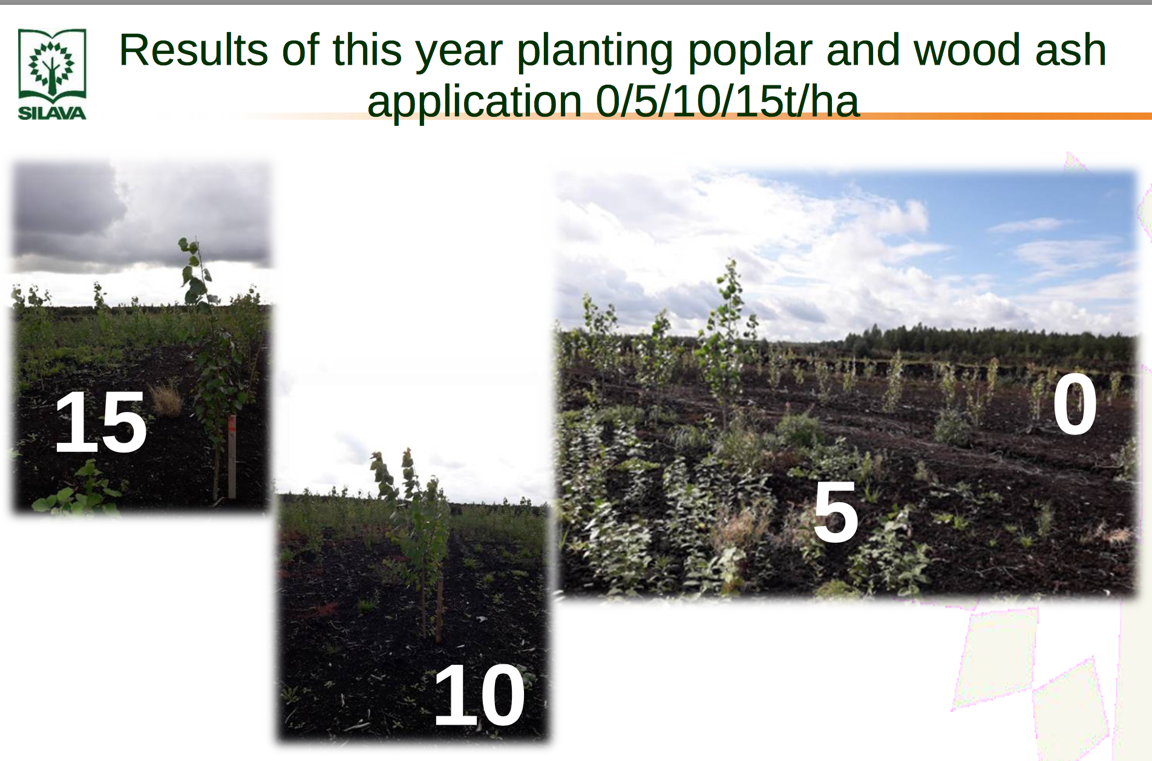
D.Lazdina also presented how sewage sludge can be used as fertilizer for trees growing on former peat fields. Trees grow even better than fertilized with mineral fertilizers.
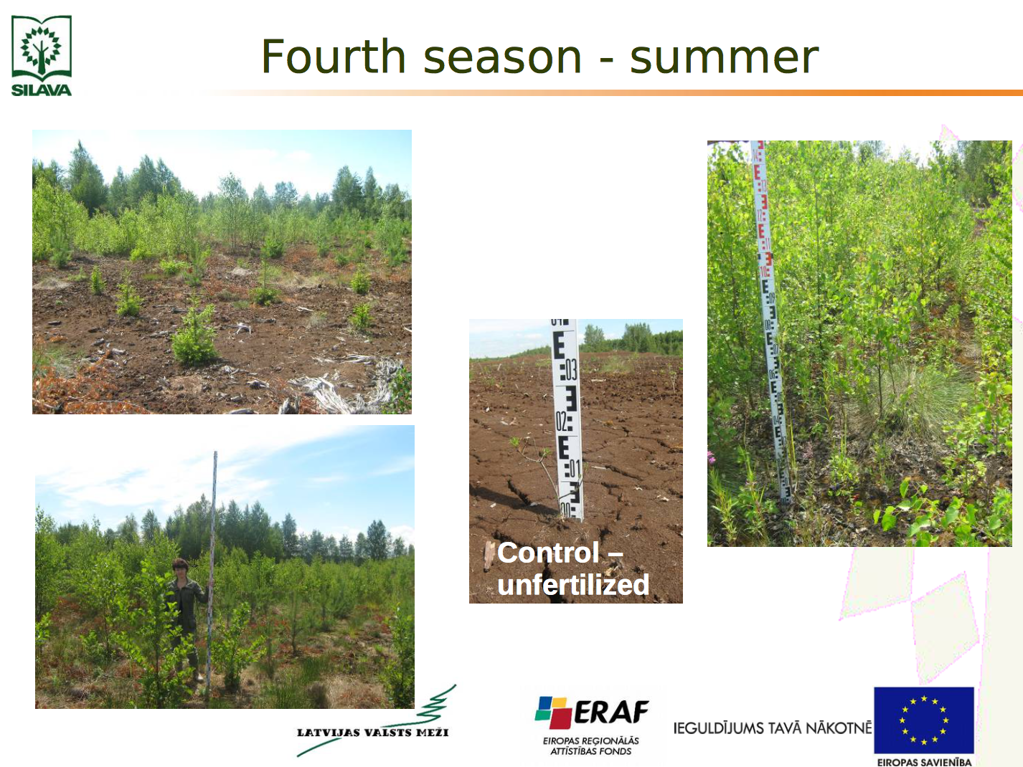
The demand for substrates in the future will only increase. From time to time, in presentations, I see slides where it is said that some countries are committed to facing out the peat from substrates. However, this can only happen with substrates used for the hobby market. Professionals or large greenhouses are unlikely to refuse peat. I wrote about this topic in my article "Economic and socio-economic aspects of extraction of peat" (look here in Latvian with summary in English).
Bernd Hofer in his presentation "Current Situation of Peat Policy in Central Europe and the Role of the International Peatland Society" showed a slide on how peat production in Germany would decrease only taking into account the weather - from almost 6 million tons this year to less than 1 million in 2037.
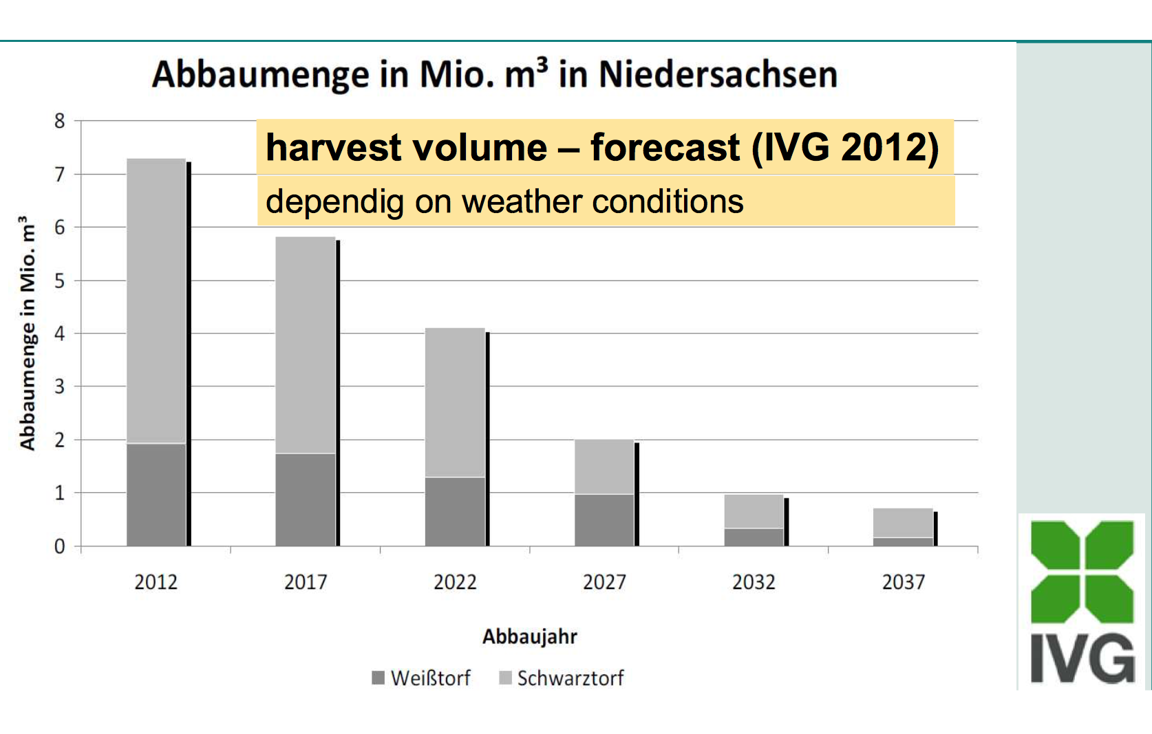
If we assume that demand for peat in Germany will remain constant - 7 million m3, then the available resources in the existing peat extraction sites (in Germany) will be able to provide only 30% of the demand. These forecasts are important to take into account when developing the Peat Strategy in Latvia, as it gives a clear signal - the demand for peat won't decrease, but the number of sites available for the extraction of peat will. We all want to eat healthy food and it has been scientifically proven that the plants that grow in peat are less vulnerable to it, so they are less vulnerable to the disease. Those who now hear voices in their heads saying: "Well, of course, if we give the green light to peat industry, all the peatlands will be peat-free already tomorrow", I can say that without EIA (Environmental Impact Assesment) it's impossible to get natural peatland for peat extraction. Already now about half of Latvia's bogs are protected and there is still a part of the bogs where extraction is not allowed even without EIA and protection. And to those who hear the next BUT - "all the money to go abroad" - I can say that not all, quite big amount stay in Latvia, and to increase it we need more substrate factories. Read more about these topics in my article (search here).
The key word here is the so-often-mentioned word in the Juris Jātnieks presentation - synergy. Align society desires for intact nature around with the need to feel the money in their wallet and the desire to stay in their own country.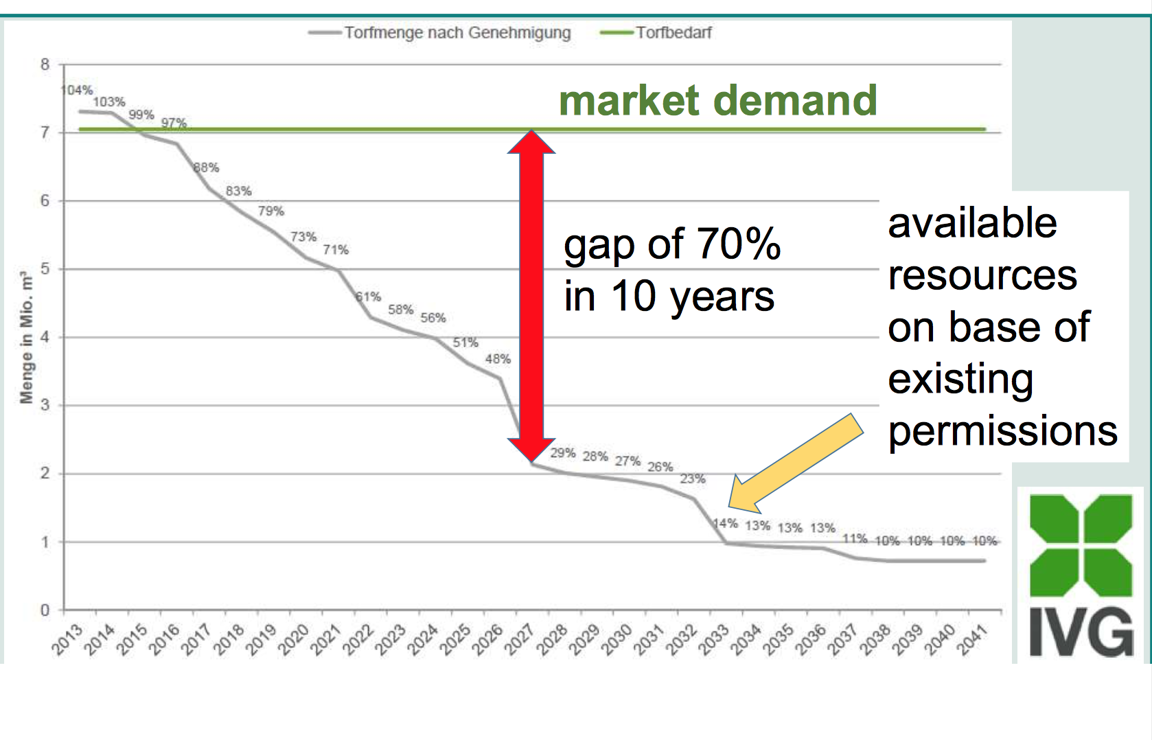
And as every year in the Forum - the prognosis of approximate peat production amounts in Baltics in 2017 - Latvia 851 594 t, Estonia - 650 000 t and Lithuania 2 507 000 m3.
Thanks to Organizers - Latvian Peat Association for very interesting agenda and possibility to be there! Looking forward to meet peat family next year in Estonia!